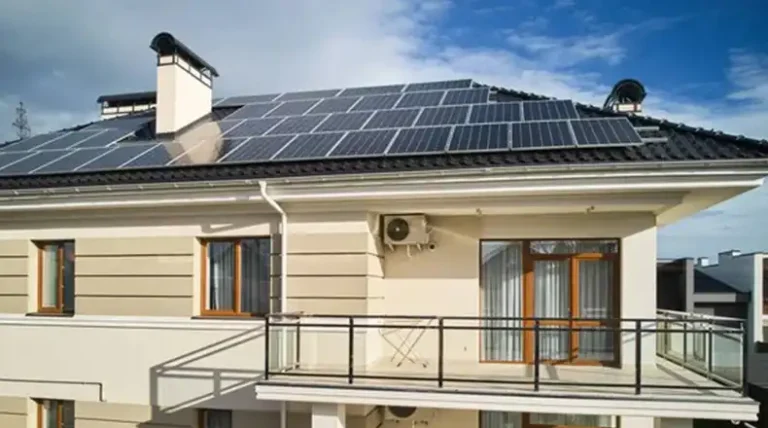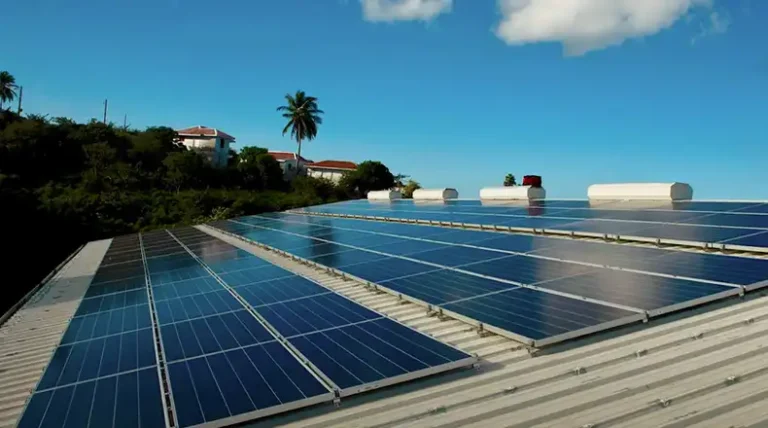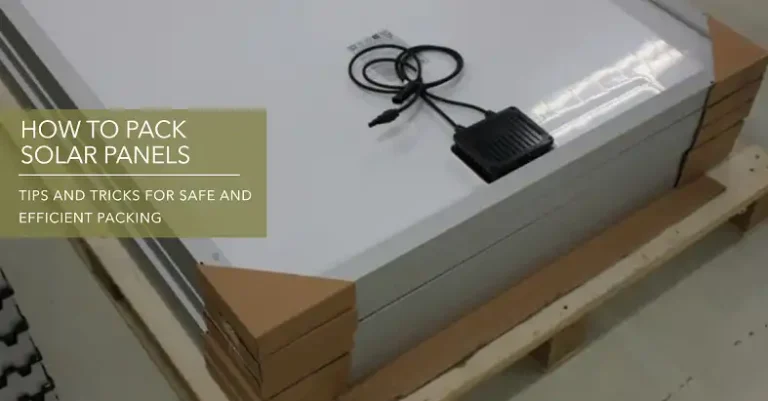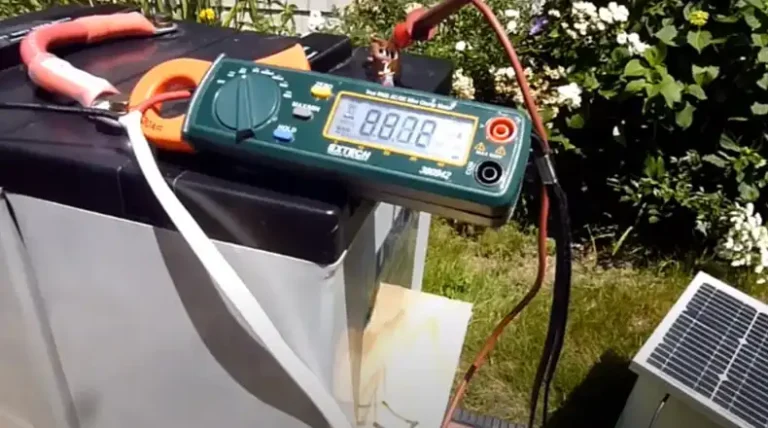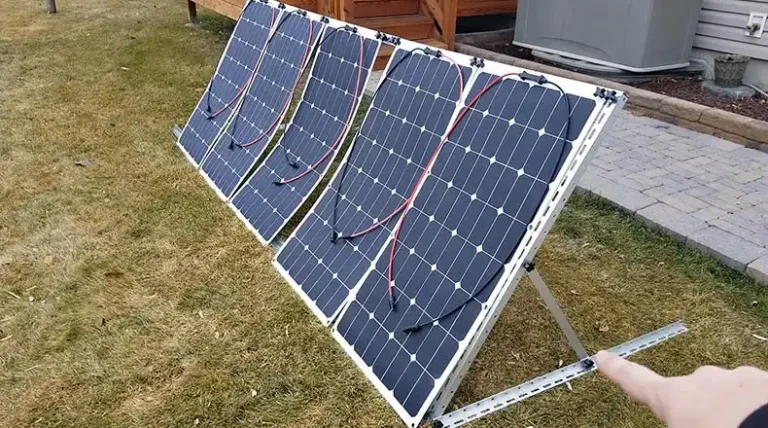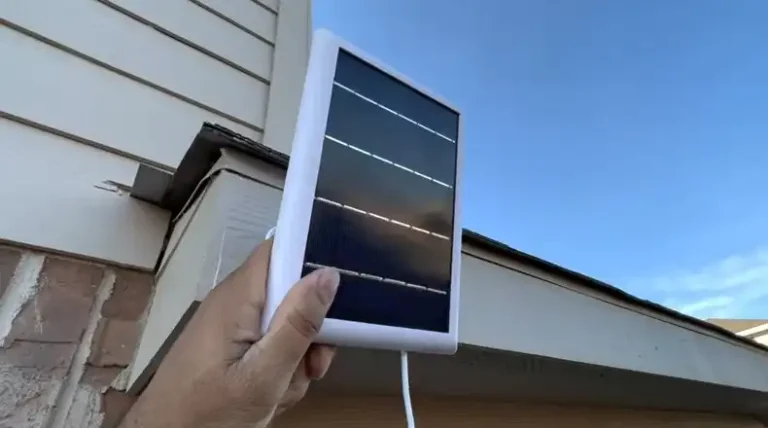How To Prevent And Fix Hot Spots On Solar Panels?
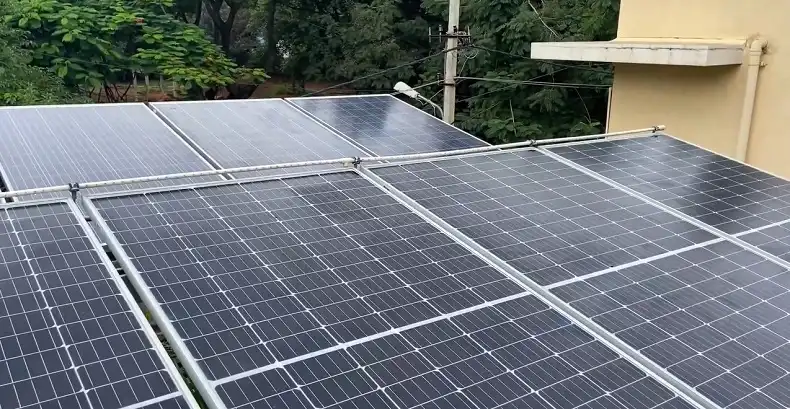
Hot spots on solar panels are a serious issue that can significantly impact the performance and lifespan of your solar energy system.
These localized areas of extreme heat occur when one or more cells in a panel become overheated, often due to shading, soiling, or internal defects.
Left unchecked, hot spots can lead to reduced power output, accelerated panel degradation, and even fire hazards.
In this comprehensive guide, we’ll explore the causes of hot spots, how to prevent them, and effective solutions for addressing this problem.
By understanding and proactively managing hot spots, you can ensure your solar panels operate at peak efficiency for years to come.
Whether you’re a homeowner with a rooftop system or a large-scale solar farm operator, this information is crucial for maximizing your investment in clean energy.
Let’s dive into the world of solar panel hot spots and learn how to keep your system running smoothly and safely.
Understanding Hot Spots
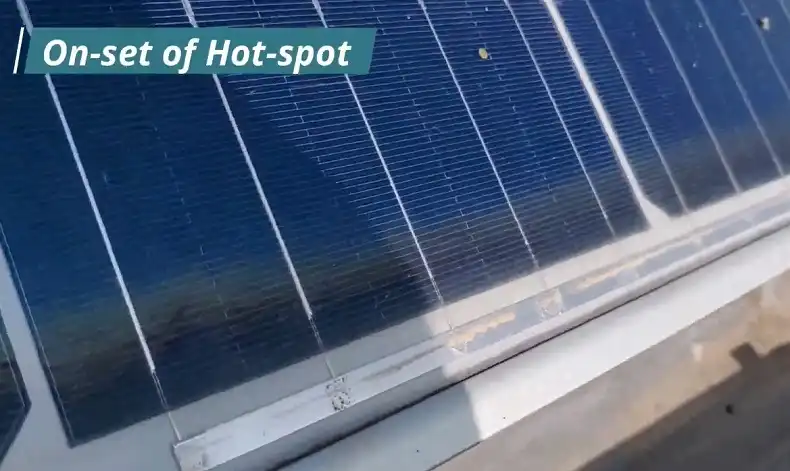
Hot spots are a common issue in solar panels that can significantly impact their performance and longevity.
Before we dive into prevention and solutions, it’s crucial to understand what hot spots are and how they affect your solar energy system.
What Are Hot Spots?
Hot spots are localized areas on a solar panel that experience excessive heat buildup. This occurs when a single cell or group of cells in the panel generates less electricity than the surrounding cells, causing it to act as a resistor and dissipate energy as heat.
How Hot Spots Affect Solar Panels
The impact of hot spots on solar panels can be severe and wide-ranging:
- Reduced efficiency: Hot spots decrease the overall power output of the panel, reducing its efficiency and your energy production.
- Accelerated degradation: The extreme heat can cause permanent damage to the affected cells and surrounding materials, shortening the lifespan of your panels.
- Safety risks: In severe cases, hot spots can lead to melting of panel components or even fires, posing a significant safety hazard.
- Warranty issues: Damage from hot spots may void your panel warranty, leading to unexpected replacement costs.
Causes Of Hot Spots
Understanding the root causes of hot spots is essential for effective prevention and treatment:
- Shading: Partial shading from trees, buildings, or even debris can cause certain cells to produce less electricity, leading to hot spot formation.
- Soiling: Dirt, dust, bird droppings, or leaves accumulating on panels can create uneven sunlight distribution, similar to shading effects.
- Module damage: Cracks, micro-fractures, or other physical damage to cells can disrupt current flow and create hot spots.
- Internal design defects: Manufacturing flaws or poor-quality components can lead to inconsistent performance across cells.
- External factors: Extreme weather conditions, such as hail, snow, or intense heat, can contribute to hot spot development.
How To Prevent Hot Spots On Solar Panels
Prevention is always better than cure, especially when it comes to solar panel maintenance. By taking proactive steps, you can significantly reduce the risk of hot spots forming on your panels.
1. Proper Site Assessment And Panel Placement
Before installation, conduct a thorough site assessment to identify potential shading issues. Consider factors such as:
- Nearby trees or structures that may cast shadows
- Seasonal changes in sun angle
- Future landscaping or construction plans
Optimal panel placement is crucial for minimizing shading risks. Work with experienced installers who can design a layout that maximizes sun exposure throughout the day and year.
2. Regular Maintenance And Cleaning
Keeping your panels clean is one of the most effective ways to prevent hot spots:
- Schedule regular cleaning sessions, especially during dry or dusty seasons
- Use appropriate cleaning methods and tools to avoid damaging the panels
- Remove any debris, leaves, or bird droppings promptly
Consider investing in a professional cleaning service if you’re not comfortable maintaining the panels yourself.
3. Choosing High-Quality Panels
Investing in high-quality solar panels from reputable manufacturers can significantly reduce the risk of hot spots:
- Look for panels with advanced hot spot mitigation technologies
- Consider panels with half-cut cell designs or IBC (Interdigitated Back Contact) technology, which are less prone to hot spot formation
- Check for certifications and extensive testing for durability and performance
4. Ensuring Proper Ventilation
Good airflow around your panels helps dissipate heat and reduce the risk of hot spots:
- Ensure there’s adequate space between the roof and the panels for air circulation
- Consider using mounting systems that promote better ventilation
- For ground-mounted systems, design the array to allow for natural air movement
5. Full Site Inspection After Installation
After your system is installed, conduct a thorough inspection:
- Use thermal imaging to check for any initial hot spots or irregularities
- Verify that all connections are secure and properly insulated
- Ensure the system is performing as expected in terms of power output
Detecting Hot Spots On Solar Panels
Early detection of hot spots is crucial for preventing long-term damage to your solar panels. Here are some effective methods for identifying hot spots:
Visual Inspection
Regular visual checks can help you spot potential issues:
- Look for discoloration or browning on the panel surface
- Check for any visible physical damage or cracks
- Inspect for signs of melting or burning around the edges of cells
While not all hot spots are visible to the naked eye, regular visual inspections can catch obvious problems early on.
Thermal Imaging
Thermal imaging is one of the most effective ways to detect hot spots:
- Use a thermal camera to scan your panels, ideally on a sunny day
- Look for areas of higher temperature compared to the surrounding cells
- Thermal scans can reveal hot spots before they become visible or cause significant damage
Consider hiring a professional with specialized equipment for a thorough thermal inspection, especially if you suspect issues but can’t visually confirm them.
Monitoring Energy Output
Keep a close eye on your system’s performance:
- Use monitoring software to track the output of individual panels or strings
- Look for unexplained drops in performance or inconsistencies between panels
- Many modern inverters and monitoring systems can alert you to potential issues
Consistent monitoring allows you to spot problems early and take action before they escalate.
How To Fix Hot Spots On Solar Panels
When hot spots are detected, prompt action is necessary to mitigate damage and restore panel performance. Here are some steps you can take:
1. Cleaning Panels
Often, a thorough cleaning can resolve hot spots caused by soiling:
- Use appropriate cleaning solutions and soft brushes to remove dirt and debris
- Pay special attention to areas where hot spots were detected
- Consider using a water drainage solution like the Aqua Pi clip to prevent water accumulation
2. Addressing Shading Issues
If shading is the culprit, take steps to reduce or eliminate the source:
- Trim trees or vegetation that may be casting shadows
- Adjust panel positioning if possible
- Consider installing micro-inverters or power optimizers to minimize the impact of partial shading
3. Repairing Or Replacing Damaged Panels
For hot spots caused by physical damage:
- Consult with a professional to assess the extent of the damage
- Replace severely damaged panels to prevent further issues
- Consider upgrading to more resilient panel types if damage is a recurring problem
4. Improving Ventilation
Enhance air circulation around your panels:
- Adjust mounting systems to increase airflow
- Clear any obstructions that may be impeding air movement
- For roof-mounted systems, ensure proper spacing between the roof and panels
5. Using Bypass Diodes And Power Optimizers
These technologies can help mitigate the effects of hot spots:
- Verify that bypass diodes are functioning correctly
- Consider installing power optimizers to improve performance in partially shaded conditions
- Explore panel-level monitoring solutions for more granular control and issue detection
Advanced Solutions For Hot Spots
As solar technology evolves, new solutions are emerging to combat hot spots more effectively:
Innovative Panel Designs
Manufacturers are developing panels with improved hot spot resistance:
- Half-cut cell designs reduce current flow and heat generation in each cell
- IBC (Interdigitated Back Contact) technology minimizes the risk of hot spots by improving current flow
- Some manufacturers are exploring new materials and cell structures to enhance heat dissipation
Smart Monitoring Systems
Advanced monitoring solutions offer better insights and faster problem detection:
- AI-powered systems can predict potential hot spot formation before it occurs
- Real-time alerts and detailed performance analytics help you stay on top of system health
- Integration with weather data can provide context for performance fluctuations
Water Drainage Solutions
Specialized tools like the Aqua Pi clip can prevent water accumulation:
- These devices attach to the lower edge of panels to facilitate water drainage
- Reducing water pooling helps prevent dirt buildup and potential hot spot formation
- Consider these solutions especially in areas with high rainfall or frequent cleaning needs
Conclusion
Hot spots in solar panels are a serious issue that can significantly impact the performance, efficiency, and lifespan of your solar energy system.
By understanding the causes of hot spots and implementing proactive prevention measures, you can protect your investment and ensure optimal energy production for years to come.
Regular maintenance, proper installation, and the use of high-quality components are key to avoiding hot spot problems.
When issues do arise, prompt detection and action can minimize damage and restore your system’s performance.
As solar technology continues to advance, new solutions and panel designs are making systems more resilient to hot spots than ever before.

